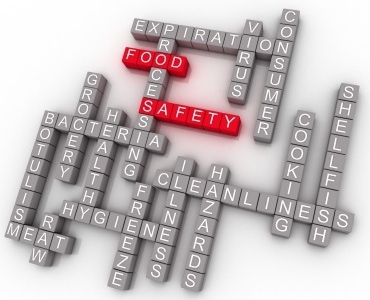
CFIA Modernization: The consultations conclude
Food in Canada
Food Safety Bake & Snack Food Beverages Confectionery Dairy Fruit & Vegetables Ingredients & Additives Meat &Poultry Pet Food Seafood Specialty Foods Canadian Food Inspection Agency CFIAEarly this year the Canadian Food Inspection Agency published responses to industry feedback received in 2013. The CFIA provided more detail about how it hopes to operate under its new terms of reference. Here is a short list.

It has been a busy summer for our industry from a regulatory standpoint. Starting early this year, the Canadian Food Inspection Agency (CFIA) published a number of consultation documents and drafts that reflected the Agency’s responses to industry feedback it received in 2013. These  documents provide significantly more detail about how the Agency hopes to operate under its new terms of reference. Here is a short list of things that grabbed my attention as I read through them.
documents provide significantly more detail about how the Agency hopes to operate under its new terms of reference. Here is a short list of things that grabbed my attention as I read through them.
- The CFIA will permit one-time and occasional importers and exporters permission to import/export animal and plant materials without a preventative control plan if the Agency deems there is insignificant risk in the transaction. In my opinion, this will be an administrative nightmare for the CFIA and will take needed resources away from higher priorities.
- Canadian Border Services (CBS) officers will be designated as inspectors to enforce “program legislation,” including CFIA legislation. This will add another burden to the CFIA’s training program that has yet to be developed.
- There is no reference to “Centres of Excellence” the Agency promised in 2013 to be resources to field agents.
- In 2013 the Agency suggested that it would try to develop programs focused on outcomes, thus providing processors more leeway to develop their own food safety programs. These recent documents are much more detailed. Although more prescriptive, this approach substantially clarifies what processors need to do to be in compliance.
- Inspectors will assign three levels of non-compliance: “critical” for situations that pose immediate threats to health and safety; “serious” for situations that are potential threats; and, “technical” for administrative errors not affecting health or food safety. It is not clear how low levels of adulteration will be classified. Will such foods be considered unfit for consumption and destroyed even if there is no significant risk?
- The Agency restated its commitment to transparency in terms of reporting on its service delivery, complaint reviews and information sharing. I sincerely hope that we’ll see truthful and objective assessments.
- The Complaints and Appeals Office (CAO) has received about 50 complaints per year since it was established in 2012. The CAO will play a significant role in providing metrics on the Agency’s performance going forward.
- The Agency has both clarified and expanded the number of options processors can use to validate a food safety processing step (intervention). This is an excellent development.
- Processors with sales of $30,000 in the 12 months preceding their license application can be exempted from having to prepare a written preventative control plan until 2017 if their products are deemed to be low risk. This is a nice concession to very small processors.
- Importers of good standing in Canada but without an office in Canada may be permitted to obtain an import license if their product(s) are prepared in a country with food safety programs equivalent to those in Canada. This does not level the playing field for Canadian importers and food processors.
- The Agency remains open to integrating information from third-party audits while assessing a processor’s compliance performance and capabilities, but is not prepared to rely on such information to ensure a firm’s compliance to Canadian food safety standards. I totally support the Agency on this stand.
- The CFIA is committed to carrying out its expanded mandate by providing world-class training and technology to field and inspection staff. Don’t expect this to happen soon. Total CFIA staff numbers were down by 172 personnel in 2013. Of the 200 new inspectors supposed to be hired, only 65 were hired in 2013. And, last but not least, inspection staff will have to wait until the necessary enabling legislation is in place.
I applaud the efforts the CFIA has made to engage the industry in the legislative process. We will see the extent to which the CFIA incorporated industry and stakeholder feedback when the legislation appears in the Canada Gazette Part I in early 2015.
Dr. R.J. (Ron) Wasik PhD, MBA, CFS, is president of RJW Consulting Canada Ltd. Contact him at rwasik@rjwconsultingcanada.com
Print this page